Coastal Canvas
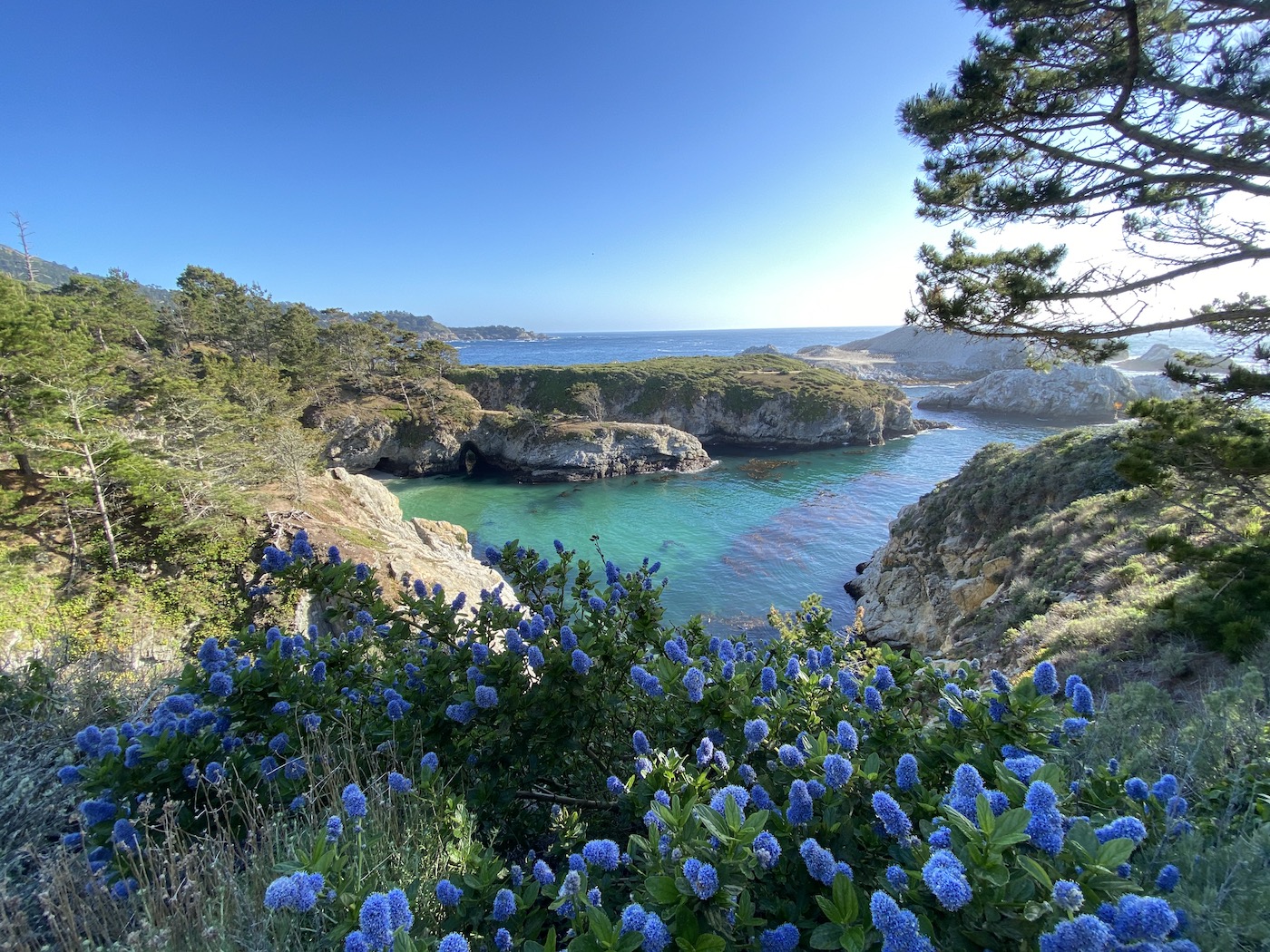
Standing at the overlook of idyllic China Cove, located within the Point Lobos State Natural Reserve between the Big Sur Coast and Carmel, I could see why the 70-something-year-old gentleman had erected his easel where he did.
It was midday and as the sun beamed down from overhead, it illuminated the tranquility of China Cove. Tucked inside the depth of the craggy, narrow natural harbor, the water was a turquoise blue. A small sandy beach was enjoyed by harbor seals, the mothers nursing their chubby pups and nuzzling them in the canopy of giant bladder kelp. It swayed with a gentle swell that found its way lapping on the beach.
The bearded artist blended his colors evenly, acting deliberately with each brush stroke to capture a rendition of China Cove anyone would be proud of. He painted beneath the shaded canopy of a pine tree as southern sea otters wrapped up in the kelp below. In the neighboring cove south of us, Brandt’s cormorants busily gathered nesting materials to construct homes for their brood.
Gem of the Coast
Throughout Point Lobos, there really isn’t a secluded cove, weathered beach, headland, or wave-battered cliff that isn’t scenic, or doesn’t lead to an overlook that reveals one of the stunningly rugged vistas abound throughout the reserve.
Visitors can drive slowly to many of the best views, but I would recommend walking the entire coastal route that hugs this ragged shoreline. This way, day trippers can truly absorb all the natural wonders teeming within this State Reserve. Walk slowly, bring binoculars, watch, and listen.
Point Lobos is great for birdwatching, whale watching, photography, and painting. There are endless locations that will halt visitors in their tracks, and force them to slow down and soak in its rugged beauty.
Many things are unique about Point Lobos, but in 1960 it became the first underwater reserve in the United States. About 775 acres of submerged lands were added to the reserve to protect intertidal, subtidal, and all its wildlife species.
Beyond the Trees
From Pacific Coast Highway 1, it’s not a long walk from the pavement to the coast at Point Lobos. Dense riparian corridors and forests separating the highway from the ocean blocks out the incessant, perpetual roar of unruly surf hammering away at the burly bluffs and the guano-covered offshore rocky spires that surround the reserve.
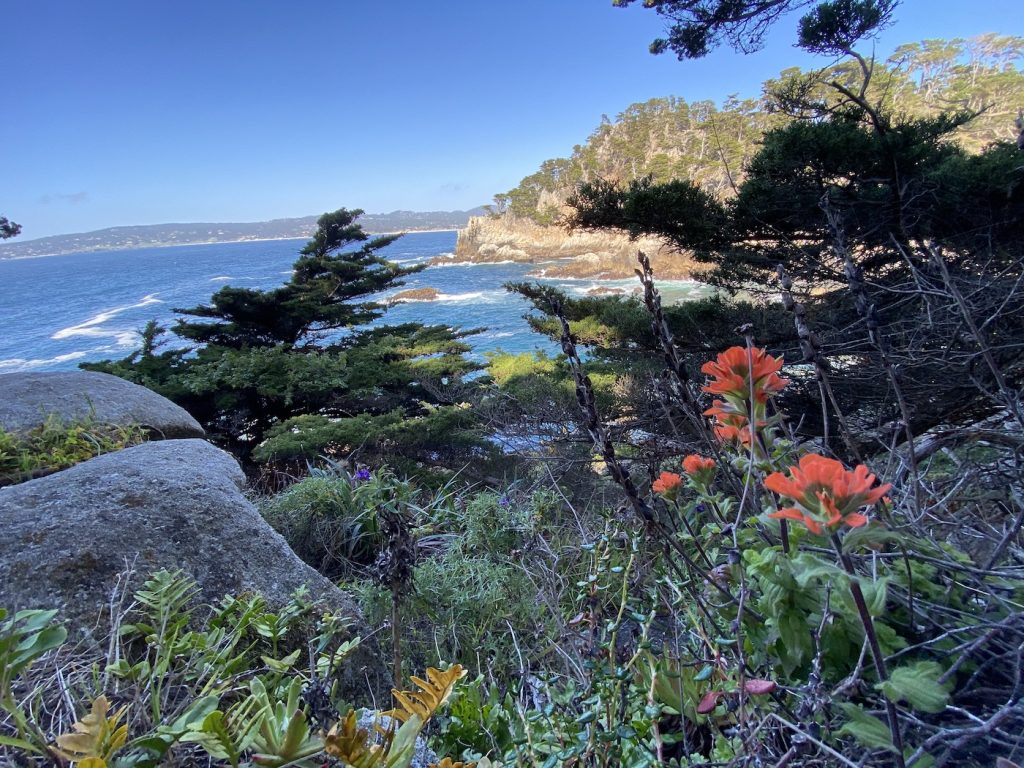
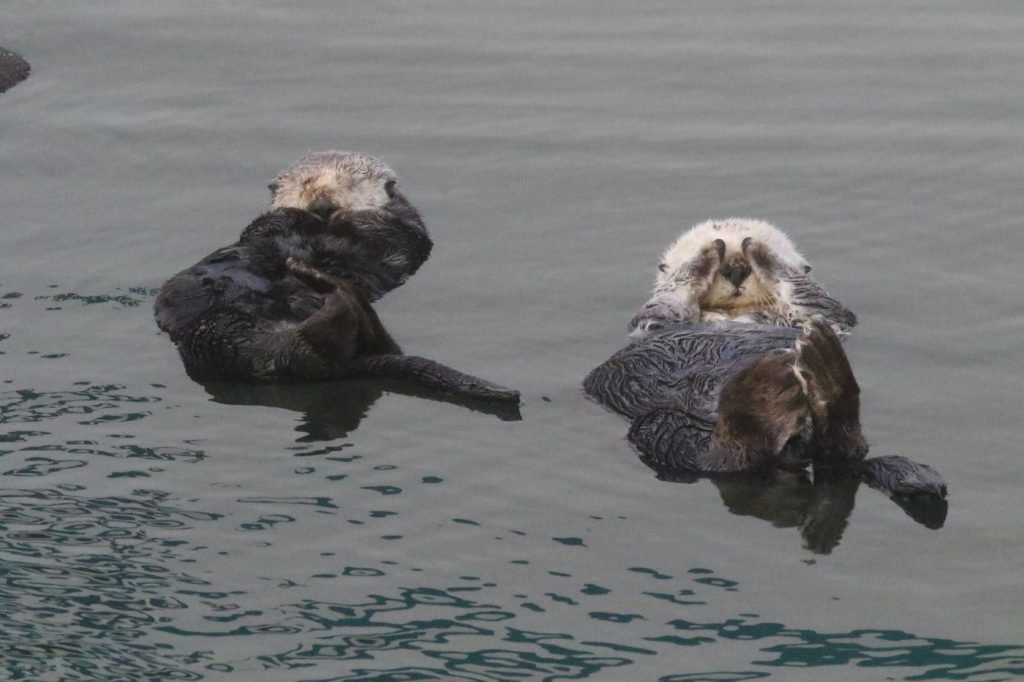
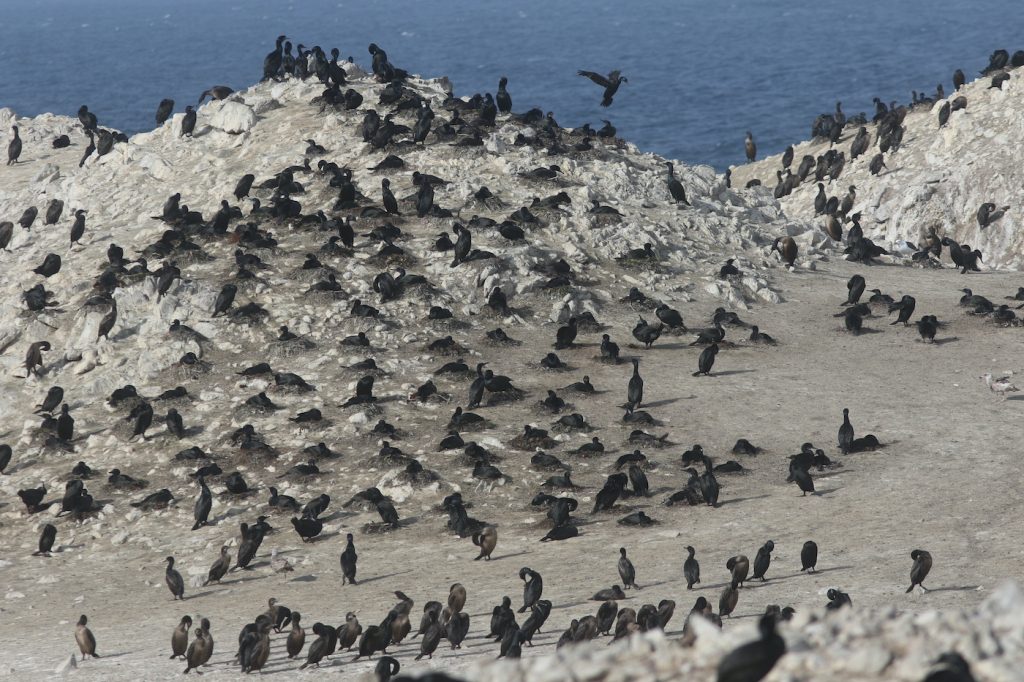
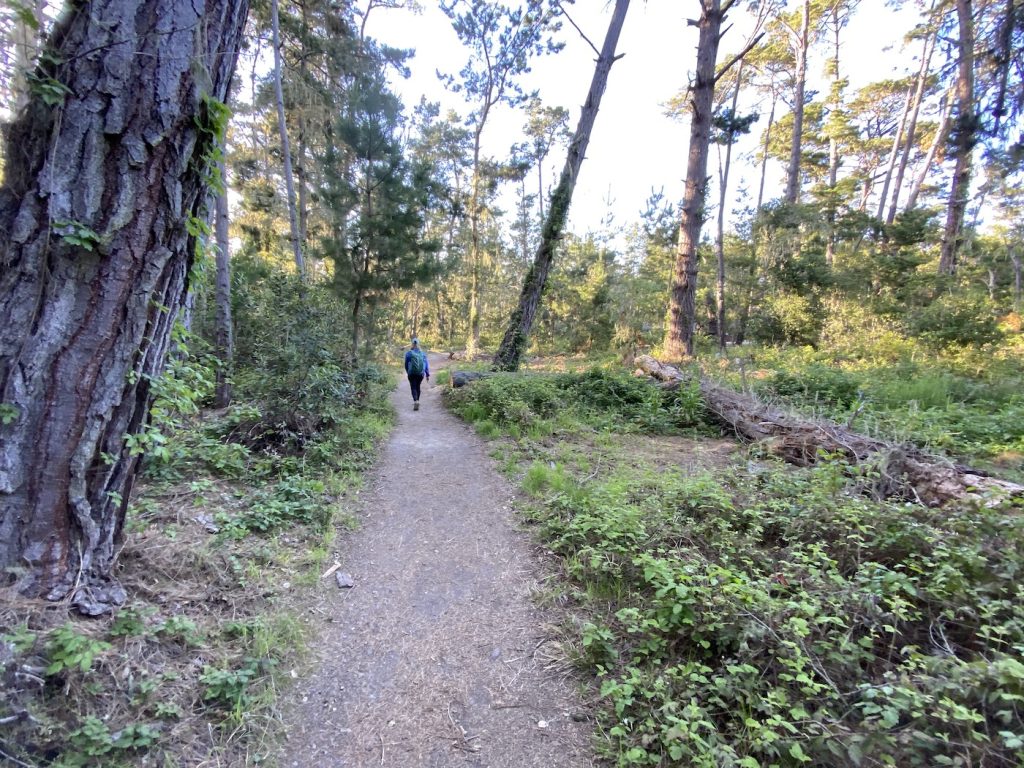
Hiking into the reserve before sunup with marine biologist Holly Lohuis, we could easily hear the calls of a brown creeper and a hairy woodpecker over the surf thundering offshore. As we followed the serpentine path, the forest began to open up, and the sounds of the coast crept in. The roar of the surf, bellowing of raucous California sea lions, dramatic calls of western gulls and black oystercatchers, and occasional yelps from hungry harbor seal pups carried across the craggy shoreline.
We both knew what time of year it was for seabirds, so we walked out to the thriving Brandt’s cormorant nesting rookery teeming with breeding pairs on their mound-like nests. Their nests were a work of art. They are built with kelp and other organic materials but are pooped on repeatedly. Think of it as papier-mâché. Eventually the nests are shaped into a solid bowl where two chicks will beg to be fed and try to survive.
During the nesting season, the parents possess brilliant blue jowls, but their eyes are blue as well. Like other rookeries, there’s lots of drama surrounding their nesting colony. Peregrine falcons, the world’s fastest flying bird, lurked nearby. Opportunistic gulls waited on the fringe of the rookery for a moment to snatch a chick away from its parents. If any wobbly chick fell from its bluff-top nest, several turkey vultures – those cleaners of the coast – scavenged the shoreline.
As we headed back into the trees, back to Highway 1, it grew ever so quiet again in a forest cloaked with poison oak, stinging nettles, waxy ferns, and spindly wild rose. Point Lobos was concealed from the rush of Highway 1, it’s flora and fauna reveling in the cacophony of the turbulent ocean.







